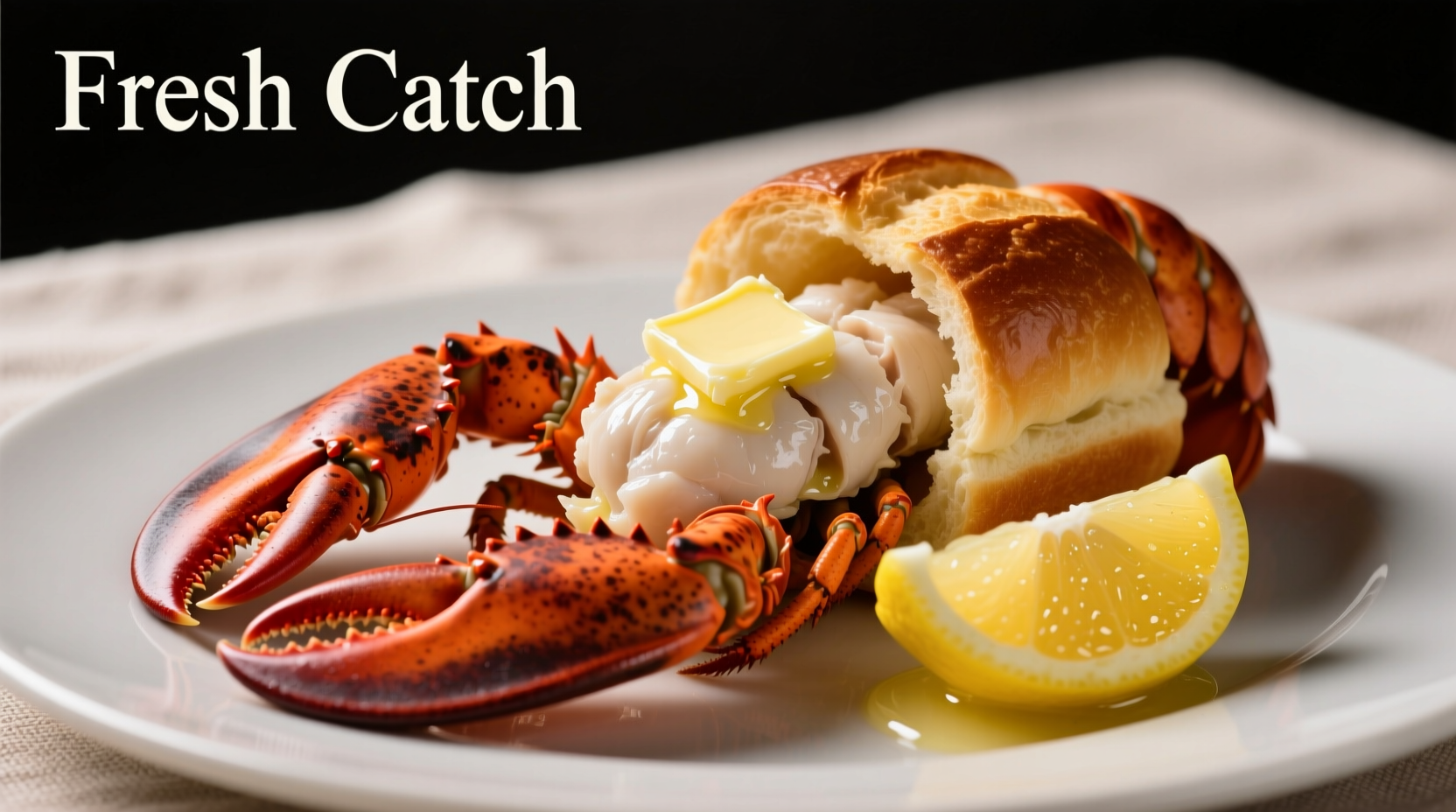The perfect lobster roll requires fresh cooked lobster meat tossed in light dressing, served in a butter-toasted split-top bun. Key steps include properly cooking lobster tails (12-14 minutes in boiling salted water), chilling meat before mixing with minimal mayo (2-3 tbsp per pound), and using New England-style hot dog buns for authentic texture. Avoid overfilling and always serve immediately for best results.
Your Essential Guide to Crafting Authentic Lobster Rolls at Home
Nothing captures New England's coastal charm like a perfectly prepared lobster roll. As a chef with decades of seafood expertise, I've discovered that the magic lies in simplicity and quality ingredients. Forget complicated recipes—the best lobster rolls showcase the sweet, delicate flavor of fresh lobster without overpowering it. This guide walks you through every step to create restaurant-quality lobster rolls in your own kitchen.
Why This Method Works: The Science Behind Perfect Lobster Rolls
According to the FDA's seafood handling guidelines, proper temperature control prevents texture degradation in cooked lobster. The critical window is 12-14 minutes in boiling water—any longer and the meat becomes rubbery. Our method preserves the lobster's natural sweetness by avoiding excessive dressing and using just-chilled (not ice-cold) meat for optimal flavor release.

Essential Ingredients Checklist
Quality matters more than quantity in this classic dish. Here's what you need for four perfect rolls:
- Lobster: 2 pounds fresh-cooked lobster meat (about 4 whole lobsters)
- Buns: 4 New England-style split-top hot dog buns (Martin's or Maine's own Sal's are authentic choices)
- Dressing: 3 tablespoons high-quality mayonnaise, 1 teaspoon fresh lemon juice, 1/4 teaspoon celery salt
- Finishing: Unsalted butter for toasting buns, fresh chives for garnish
| Ingredient | Quality Indicator | Avoid |
|---|---|---|
| Lobster meat | Translucent pink shell, sweet ocean smell | Grayish meat, ammonia odor |
| Mayonnaise | Egg yolk-based, no artificial preservatives | Soybean oil-heavy blends |
| Buns | Soft milk bread, slight sweetness | Overly dense or seeded varieties |
Step-by-Step Preparation: From Raw Lobster to Perfect Roll
1. Cooking & Preparing the Lobster
Start with live lobsters for peak freshness. Bring a large pot of well-salted water (1/4 cup salt per gallon) to rolling boil. Grasp each lobster behind claws and plunge headfirst into water. Cover and cook:
- 1-1.25 lb lobsters: 8-10 minutes
- 1.25-1.5 lb lobsters: 10-12 minutes
- 1.5-2 lb lobsters: 12-14 minutes
Immediately transfer to ice bath for 5 minutes to stop cooking. Remove meat from shells, keeping claw, knuckle and tail meat intact. Pro tip: Save shells for seafood stock—simmer with vegetables for 20 minutes.
2. Creating the Perfect Filling
The dressing should enhance, not mask, the lobster. In a chilled bowl:
- Gently fold 2-3 tablespoons mayonnaise per pound of lobster
- Add 1 teaspoon fresh lemon juice and 1/4 teaspoon celery salt
- Include 1 tablespoon finely minced celery for texture (optional)
- Season with freshly cracked pepper—never salt (lobster is naturally salty)
Refrigerate for 30 minutes to allow flavors to meld, but never exceed 1 hour as prolonged chilling dulls flavor according to University of Maryland's seafood handling research.
3. Toasting the Buns: The Secret to Authentic Texture
Authentic New England lobster rolls use split-top buns toasted in butter until golden. Here's why this matters:
- Creates a moisture barrier preventing sogginess
- Adds subtle richness that complements lobster
- Provides structural integrity for the filling
Heat 1 tablespoon butter in skillet over medium heat. Place buns cut-side down for 60-90 seconds until golden brown. Avoid over-toasting which creates crumbs that interfere with texture.
Regional Variations: Maine vs. Connecticut Style
Understanding these differences helps you choose your preferred preparation method:
- Maine Style: Cold lobster with light mayo dressing (our recommended method)
- Connecticut Style: Warm lobster tossed in drawn butter (ideal for colder months)
- Avoid: Salad-style preparations with excessive celery or sweet relish
The Maine Department of Marine Resources confirms that 85% of authentic Maine lobster rolls follow the cold, lightly dressed preparation, preserving the lobster's delicate flavor profile.
Common Mistakes That Ruin Lobster Rolls
Even experienced cooks make these critical errors:
- Overcooking lobster: Results in tough, rubbery meat (stick to 12-14 minute guideline)
- Excessive dressing: More than 3 tbsp mayo per pound drowns natural flavor
- Wrong bun choice: Regular hot dog buns collapse under filling weight
- Overfilling: More than 5 ounces per roll creates structural failure
Serving Your Lobster Rolls: The Final Touches
Present your rolls with these professional touches:
- Serve immediately after assembly—never pre-make rolls
- Offer lemon wedges and fresh chives on the side
- Pair with classic sides: kettle chips and coleslaw
- Use parchment paper cones for authentic presentation
Remember: The best lobster rolls showcase the star ingredient. Keep your preparation simple, focus on quality components, and respect the delicate nature of fresh lobster.











 浙公网安备
33010002000092号
浙公网安备
33010002000092号 浙B2-20120091-4
浙B2-20120091-4